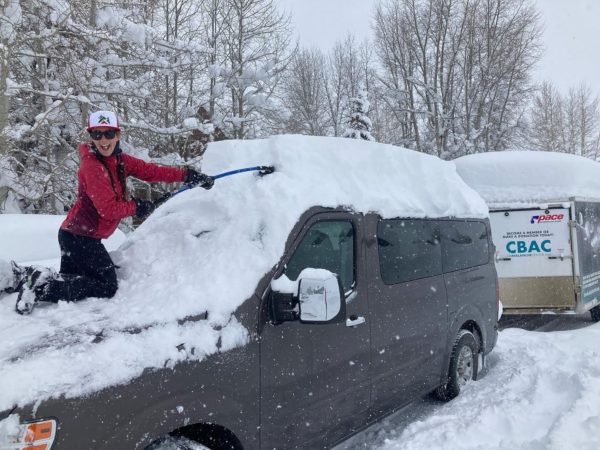Significant amounts of new snow or rain are an obvious sign of instability.
Intense or prolonged snowfall or rain events are the most common red flag associated with increased avalanche activity. Simply put, new snow or rain adds weight to the snowpack. The more weight you add and the faster you add it, the more likely the snowpack will reach its breaking point. Although the threshold for instabilities varies from slope to slope, a foot or more of new snow (or ~1.0” Snow Water Equivalent) in the past 24 hours is a rough rule of thumb for highlighting obvious instability.

